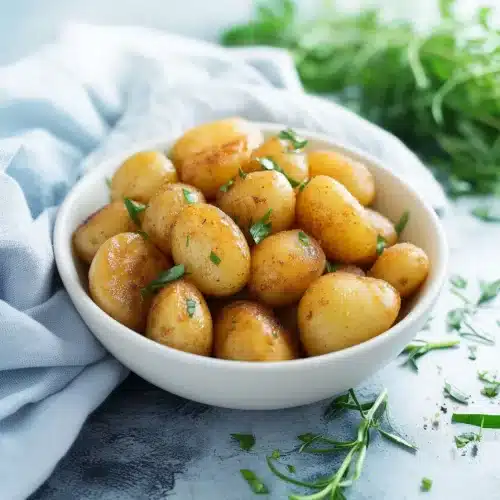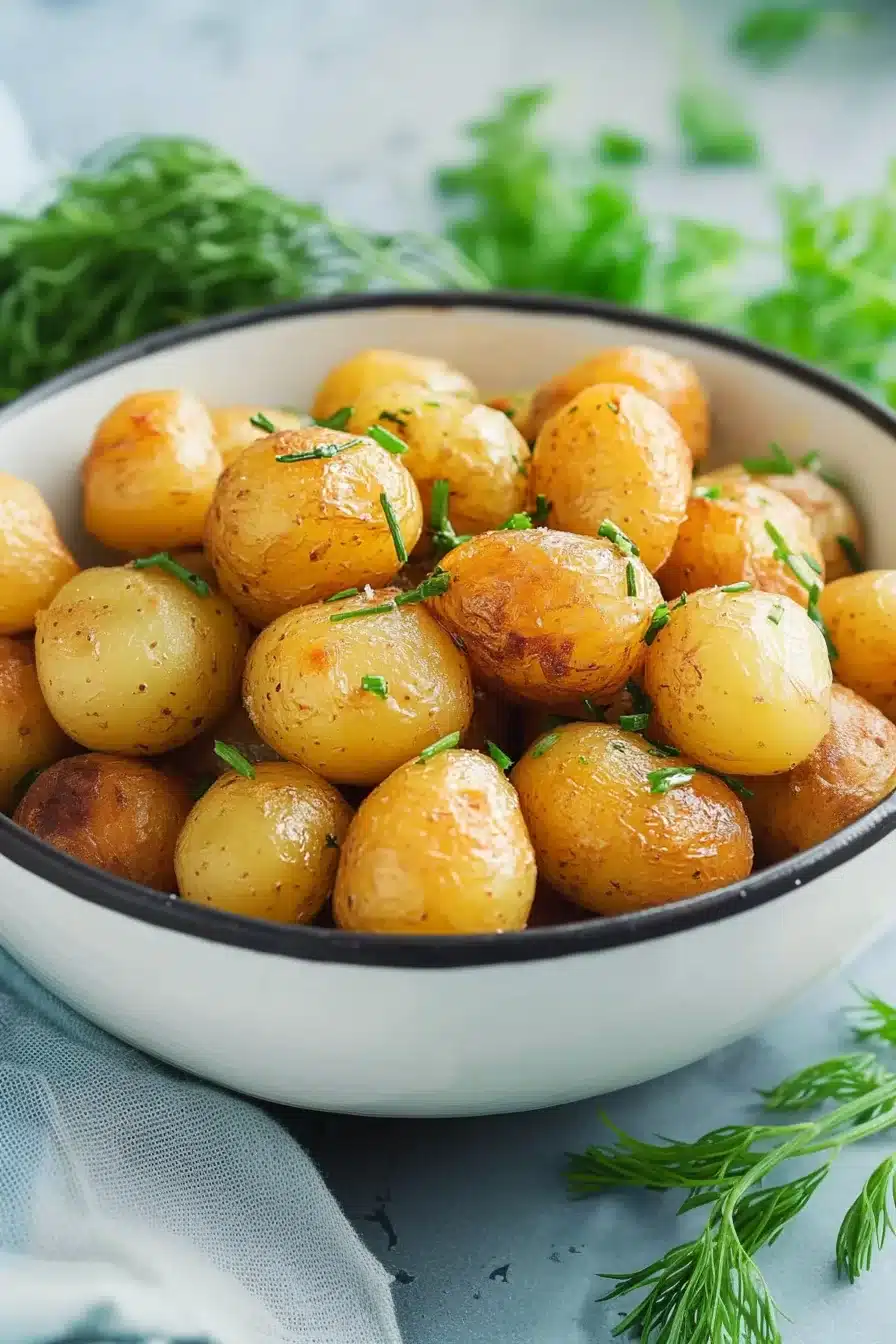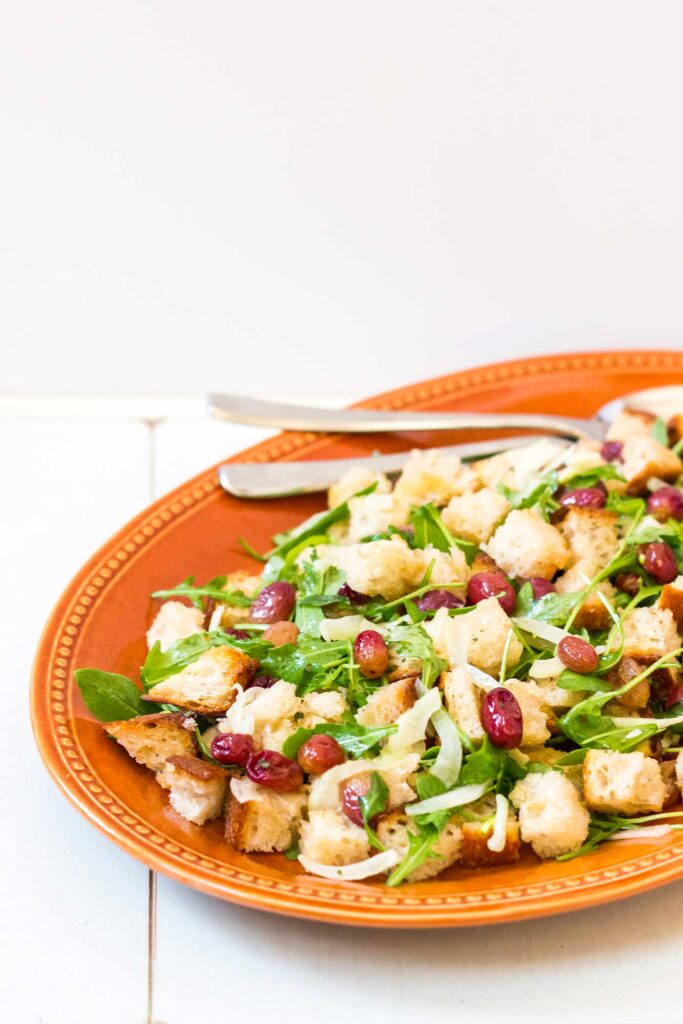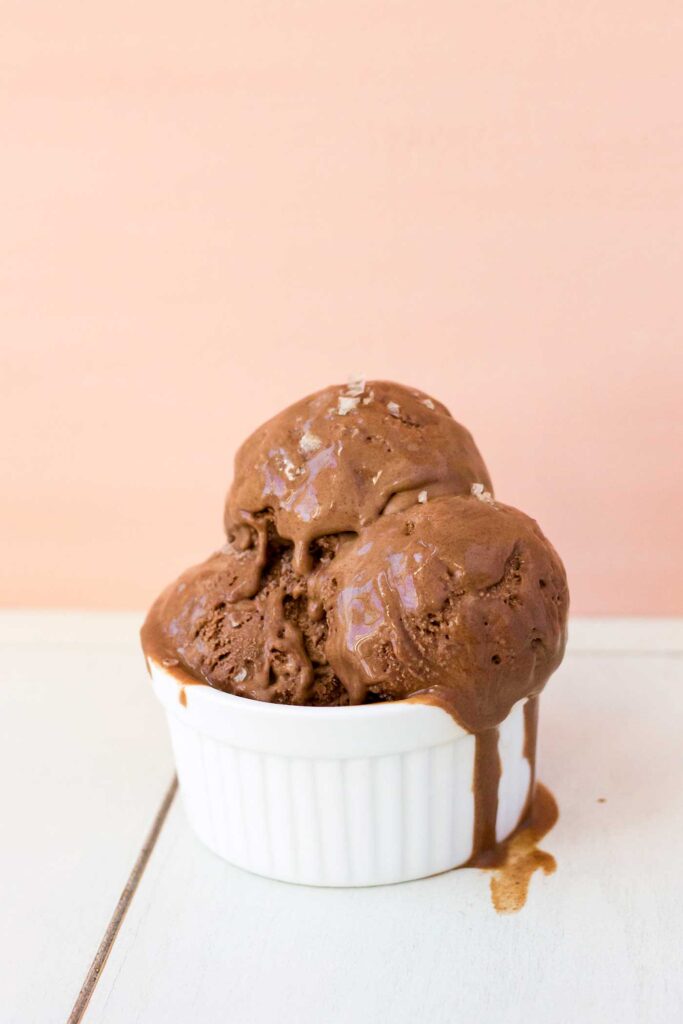
Crispy outside, creamy inside—Syracuse Salt Potatoes are little new potatoes simmered in briny water, then bathed in hot, melted butter. Irresistibly salty, charmingly simple.
Some recipes have an intense backstory. This one’s just buttery, salty bliss. New potatoes get their moment in the spotlight here—no peeling, no fuss, just pure potato comfort that kind of tastes like a love letter to your taste buds. You could serve them up hot at a backyard thing or make them in your PJs and eat them standing up in the kitchen—I won’t judge. Actually, I’d applaud you.
Table of Contents



Don’t let this one slip away — pin it now and thank yourself later!
Don’t let this one slip away — pin it now and thank yourself later!
Why You’ll Love this Syracuse Salt Potatoes Recipe
There’s nothing flashy about it—and that’s exactly the charm. This is humble food at its finest.
- Ridiculously simple to make: You just stir, simmer, drain, and drizzle. No peeling, no roasting gymnastics, no overthinking it.
- Comfort food texture magic: The salty boil makes the skins a little wrinkly, the insides stay creamy and fluffy. It’s a potato glow-up.
- Naturally gluten-free and vegetarian: Everyone at the table can join the salty spud party, unless they dislike joy.
- Affordable, filling, and flexible: Four pounds of potatoes for serious comfort? Yes please. They go with everything.
- The salty crust = chef’s kiss: That fine layer of salt that clings after boiling? It’s not just pretty. It’s packed with savory oomph.
- Basically a blank canvas: Drizzle with melted butter, but also try herbs, cheese, or a little cracked pepper. Sky’s the limit.
Ingredient Notes
The ingredient list here is almost laughably short, but each one earns its spot.
- New potatoes: These little guys hold their shape beautifully and have a creamy interior that gets even better after a salty bath. Try to find ones similar in size for even cooking.
- Water: Yes, it’s just water, but enough to fully submerge the potatoes is essential. Don’t skimp or they’ll cook unevenly.
- Fine salt: Use fine table salt or a finely ground sea salt. Coarse kosher salt won’t dissolve as well and ruins the whole magic crust situation.
- Butter: Unsalted or salted both work. Melt it just before serving so it’s silky and warm enough to slide over the spuds like a dream.
How To Make This Syracuse Salt Potatoes Recipe
You’re about six steps away from salty potato nirvana. Here’s how it all goes down:
-
Give the spuds a bath: Thoroughly wash the new potatoes and give them a gentle scrub if needed. No peeling, though. That skin adds texture and holds in the creamy center.
-
Dissolve the salt: Pour the water and salt into a large heavy-bottomed pot, and stir like you mean it. You want every crystal to dissolve fully. If it settles to the bottom like lazy sand, keep stirring.
-
Simmer until tender: Add the clean potatoes, turn the heat to medium-high, and bring the whole thing to a boil. Once it’s happily bubbling, drop it down to a mellow medium-low. Let ’em simmer for about 15 minutes—until a fork slips in easily.
-
Drain and let crust: Pour the potatoes into a colander and leave them alone for a few minutes. As they dry, the salt will rise to the surface, forming that signature white, crusty layer. It’s basically potato frosting (okay, not sweet—but still magical).
-
Butter them up: Melt your butter gently—microwave or stovetop, take your pick. Once the potatoes are dry and crusty, pour that buttery goodness all over. Be generous. No one likes a dry potato.
-
Serve while warm: These taste best fresh and hot. You can get fancy with parsley, green onions, smoked paprika, or even a tiny swirl of hot sauce if you’re feeling wild.
Storage Options
So you made a mountain of salt potatoes and somehow didn’t devour them all. Impressive restraint. Luckily, they keep pretty well!
Pop the leftovers into a container with a tight lid and stick them in the fridge. They’ll be fine for about 3 to 4 days. The salt crust does mellow out a bit in storage, but they’re still plenty tasty.
Reheating? You’ve got options. A quick zap in the microwave works fine, though the skin might get a little soft. If you want to bring back some crispness, toss them in a skillet with a pat of butter or a glug of olive oil. Let them sizzle until golden on the outside.
Now, about freezing—I get it, you want to hoard these. Unfortunately, they don’t freeze super well. The texture turns sad and mealy after thawing, like they forgot who they once were. Stick to fridge storage, and enjoy any leftovers while they’re still shining.
Variations and Substitutions
Okay, so you’ve mastered classic Syracuse Salt Potatoes. Let’s have a little fun with tweaking while still keeping their soul intact.
- Herbed butter: Mix chopped parsley, chives, or thyme into the butter before drizzling. Maybe even a whisper of garlic. It turns things a little fancy without extra work.
- Kick of spice: A sprinkle of smoked paprika or chili flakes turns this cozy side into something with a gentle punch.
- Swap the butter: Vegan or dairy-free? Use olive oil or a plant-based butter alternative. Just warm it up first so it coats evenly.
- Top with cheese: A shower of finely grated Parmesan or crumbled feta melts beautifully over the warm potatoes. Total comfort food vibes.
- Serve smashed and roasted: After boiling and drying, give the potatoes a little squish, then roast them in the oven until crispy-edged. Kind of a cross between a salt potato and a smashed potato party trick.
What to Serve with Syracuse Salt Potatoes
These salty little nuggets are team players. They work with steak, fish, or even just a plate of veggies. Honestly, they’ve never met a main dish they didn’t cozy up to.
-
If you’re going the meat route, I highly recommend pairing these with seared protein. Something like crab Alfredo makes for a totally indulgent plate. A surf-and-starch combo that’s pure comfort.
-
For something lighter, pan-seared fish complements the potatoes beautifully. Try them alongside this pan-seared cod with rainbow chard, so you get buttery richness with a beam of brightness.
-
They also make a solid addition to a backyard cookout. Toss them in alongside grilled burgers or veggie skewers. Everyone’s going to reach for second helpings.
-
Or go full retro and serve them as part of a dinner spread with cornbread muffins (these bacon basil ones are particularly dreamy), coleslaw, and good conversation.
-
I’ve even snacked on leftovers cold, dipped in mustard. No shame. They’re just as satisfying when you’re raiding the fridge at 11 p.m.


Don’t let this one slip away — pin it now and thank yourself later!
Don’t let this one slip away — pin it now and thank yourself later!
Frequently Asked Questions
Can I use other types of potatoes instead of new potatoes?
Sort of. You can use small Yukon Golds or similar waxy varieties, but avoid starchy types like Russets. The key is finding potatoes with thin skins and low starch—otherwise, they might break apart in the salty water or turn chalky inside. And honestly, the tiny size of new potatoes helps them cook evenly with that gorgeous salt crust.
Why do the potatoes get a white crust after boiling?
Ah yes, potato magic! That white coating is pure salt, and it forms as the potatoes dry off. Basically, the salty water gets absorbed a little during cooking, and then as the steam rises off, salt crystallizes on the surface. It’s kind of like nature’s potato seasoning. Just let them sit for a bit after draining, and you’ll see it happen like kitchen science.
Is it too salty with that much salt in the water?
Surprisingly, no. It seems wild to dump that much salt into a pot, but remember—it doesn’t all get absorbed. The potatoes take on just enough seasoning, and the rest makes that gorgeous surface crust. If you’re nervous, you can cut back slightly, but don’t go too shy or you’ll lose what makes this dish special. Trust the process.
Can I make these Syracuse Salt Potatoes ahead of time?
Yes, absolutely. Boil them as directed, let them dry out a bit, then refrigerate. When you’re ready to serve, warm them up gently and drizzle the butter just before eating. They do taste best fresh, though, so if you can serve them the same day, you’ll get maximum crust crispness and butter absorption.

Syracuse Salt Potatoes
Ingredients
Main Ingredients
- 4 lb (1.8 kg) new potatoes small; about 1.8 kg, unpeeled, well-scrubbed
- 8 cups (2 liters) water enough to cover potatoes
- 1 cup (250 g) fine salt use table salt or finely ground sea salt (not coarse salt)
- 1/2 cup (115 g) unsalted butter or salted butter, melted (about 115g)
Optional Toppings
- fresh herbs chopped parsley, chives, or thyme
- grated Parmesan or crumbled feta
- smoked paprika or chili flakes
- cracked black pepper
Equipment
- Large pot
- Colander
Instructions
- Wash the potatoes: Scrub the new potatoes under cool water to remove any dirt, but leave the skins on. No peeling needed!
- Make the brine: In a large heavy-bottomed pot, add the water and salt. Stir well until all the salt is fully dissolved. (If it settles, keep stirring.)
- Add the potatoes: Place the cleaned potatoes in the salty water. Turn heat to medium-high and bring to a boil.
- Simmer: Once boiling, reduce heat to medium-low and simmer (uncovered) for 15–20 minutes, until the potatoes are just tender and a fork pierces them easily.
- Drain and rest: Pour the potatoes into a colander and let them sit for a few minutes. As they dry, a thin, white salty crust will naturally form on the skins.
- Butter them up: Melt the butter, then pour generously over the hot potatoes. Gently toss to coat every spud in glossy butter.
- Serve hot: Enjoy right away! Sprinkle with chopped herbs, grated cheese, or cracked black pepper if you'd like extra flavor.









